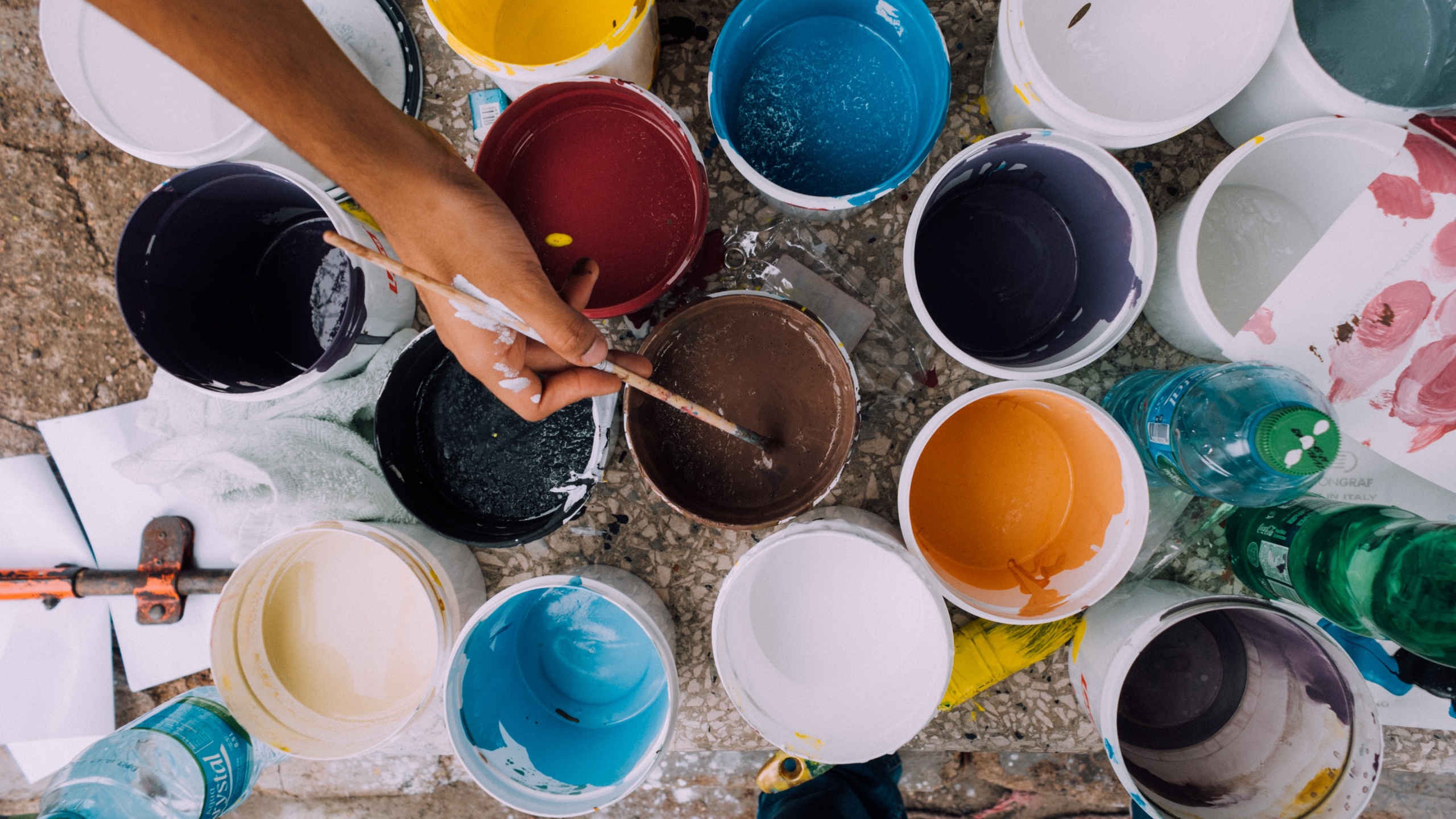In the digital era, having a compelling online presence is pivotal for painters and painting contractors aiming to showcase their portfolio and extend their clientele. A well-designed painting website not only serves as a digital portfolio but also as a conduit for potential customers to discover and engage with your painting services. By following best practices in web design and conversion rate optimization, painters can significantly enhance their online visibility and customer engagement. Here are a few indispensable tips for creating a painting website that effectively converts visitors into customers:
Engaging Painting Website Design:
-
- Professional Aesthetics:
- Portfolio Showcasing: Your website should serve as a digital gallery of your work. Include high-resolution images of your completed projects, possibly categorized based on style, size, or type of painting jobs you’ve done. An online portfolio reflects your expertise and gives potential customers a clear insight into your craftsmanship.
- Color Harmony: As a painter, showcasing a harmonious color palette on your website is pivotal. It not only reflects your understanding of color theory but also creates a visually pleasing experience for visitors.
- Typography: The choice of font is often overlooked, yet it plays a crucial role in the overall aesthetic of your painting website. Opt for fonts that are legible and harmonize with the design elements of your site.
- User-Friendly Interface:
- Responsive Design: Your website should be accessible and visually appealing on various devices including desktops, tablets, and smartphones. A responsive design ensures that your website adjusts to different screen sizes without compromising the user experience.
- Easy Navigation: A well-structured menu, clear headings, and a straightforward layout enable visitors to easily navigate your site, find the information they need, and view your portfolio without any hassles. Consider including a search function to help visitors quickly find the information they’re seeking.
- Loading Speed: A slow website can deter visitors and negatively impact your search engine ranking. Optimize your site’s loading speed by compressing images, minimizing code, and using caching solutions.
- Informative Content:
- Services Page: Clearly outline the painting services you offer. Whether it’s residential, commercial, interior, or exterior painting, provide detailed descriptions along with the benefits clients can expect.
- About Us Page: Personalize your painting website by sharing your story, your approach to painting, and any qualifications or certifications you hold. People love to work with individuals they feel connected to and trust.
- Client Testimonials and Reviews:
- Build Trust: Showcasing testimonials and reviews from satisfied clients builds credibility and gives new visitors confidence in your services.
- Visual Proof: Accompanying testimonials with before-and-after photos of your painting projects provides visual proof of your skill and the value you provide.
- Contact Information:
- Accessibility: Make it easy for visitors to get in touch with you by providing multiple contact options such as a contact form, email address, and phone number.
- Location: If you have a physical office, include your location along with a map on your contact page. This is also beneficial for local SEO.
- Blog Section:
- Educational Content: Share blog posts about painting tips, color trends, and maintenance advice. Educational content positions you as an authority in your field and can help improve your site’s SEO.
- Social Media Integration:
- Engagement: Link your social media profiles to your website and display a feed of your recent posts. This encourages engagement and provides an additional platform for showcasing your work and interacting with potential customers.
- Professional Aesthetics:
The primary goal is to create a painting business website design that is not only aesthetically pleasing but also user-friendly and informative, thereby enhancing the user experience and encouraging visitors to engage with your painting services.
Landing Page Design for Painters:
-
- Focused Content:
- Clarity of Offering: Your landing page should succinctly articulate the services you provide. Clear, concise language and headings can help communicate your offerings to visitors quickly.
- Value Proposition: Highlight the benefits and unique value you bring to your customers. This could include your experience, the quality of materials you use, or the satisfaction guarantee you provide.
- Personal Touch: Share a brief story or mission statement that reflects your passion for painting and your commitment to customer satisfaction. This personal touch can help create a connection with potential customers.
- Visual Appeal:
- High-Quality Images: Showcase your best work through high-resolution images. Before-and-after photos can particularly highlight the transformation you can provide.
- Video Content: If possible, include video testimonials or a video showcasing your painting process. Visual content can be incredibly engaging and help convey your expertise and professionalism.
- Interactive Elements: Consider adding interactive elements like a color palette tool or a virtual consultation scheduler that can engage visitors and encourage them to interact with your page.
- Social Proof:
- Testimonials: Include reviews and testimonials to build trust. Real feedback from satisfied customers can significantly impact the decision-making process of potential clients.
- Case Studies: Delve deeper into a few projects by presenting case studies that detail the process, challenges, and outcomes of particular painting jobs.
- Call to Action (CTA):
- Strong, Clear CTA: Your CTA should stand out and clearly instruct visitors on the next step, whether that’s getting a quote, scheduling a consultation, or viewing your portfolio.
- Positioning: Place your CTA at a prominent spot on your landing page, and consider having it appear at multiple locations for ease of access.
- Optimized Form Fields:
- Ease of Contact: Include a simple contact form that makes it easy for potential clients to reach out. Keep the form fields to a minimum to lower the barrier to entry, asking only for essential information like name, email, and a brief description of the painting project.
- Privacy Assurance: Assure visitors that their information will be kept confidential and only used for consultation purposes.
- SEO Integration:
- Keyword Optimization: Implement SEO strategies by incorporating relevant keywords like “painting website tips” and “landing page design for painters” in a natural, reader-friendly manner.
- Meta Tags: Ensure that your landing page has well-structured meta tags, including a compelling meta description that encourages clicks from search engine results.
- Mobile Optimization:
- Responsive Design: Ensure that your landing page is mobile-friendly. A significant amount of web traffic comes from mobile devices, and a mobile-optimized page is crucial for providing a good user experience.
- Loading Speed:
- Optimization: Just like with your main website, ensure that your landing page loads quickly to keep potential customers engaged and reduce bounce rates.
- Analytics and Tracking:
- Performance Monitoring: Utilize analytic tools to monitor the performance of your landing page, track conversions, and understand visitor behavior to make data-driven improvements.
- Focused Content:
By concentrating on these elements while designing your landing page, you can create a compelling, user-friendly entry point to your painting website that effectively communicates your value proposition and encourages visitor conversion.
Effective Call to Action for Painting Websites:
-
- Visibility:
- Prominent Placement: Your CTA should be placed prominently on your webpage where it’s easily visible, such as above the fold (the part of the webpage visible without scrolling) or at the center of the landing page.
- Repeated Exposure: Consider having the CTA appear at multiple locations on your page, such as at the top, middle, and bottom, to increase the chances of visitor engagement.
- Contrasting Colors: Use colors that stand out from the rest of your webpage to draw attention to your CTA. However, ensure that the colors still align with your overall website design.
- Compelling Language:
- Action-Oriented Words: Use verbs that inspire action like “Get Started,” “Request a Quote,” or “Book Now.” This creates a sense of urgency and encourages visitors to take action.
- Benefit-Driven: Explain the benefits of taking action. For instance, “Get a Free Consultation” or “Discover Your Home’s Potential” can highlight the value you are offering.
- Personalization: Personalized language like “Get Your Free Quote” can create a more engaging and personalized experience for visitors.
- Size and Design:
- Noticeable Size: Your CTA button should be large enough to be noticed but not so large that it overwhelms other important content on your page.
- Design Consistency: While the CTA should stand out, its design should still be consistent with the overall aesthetics of your website, maintaining the same font and design style.
- Secondary CTAs:
- Additional Options: Besides the primary CTA, consider having secondary CTAs that offer other actions visitors can take, like viewing your portfolio or reading customer testimonials.
- Less Prominent: Ensure that secondary CTAs are less prominent than the primary CTA to avoid confusion and to guide visitors towards the most desired action.
- A/B Testing:
- Optimization: Conduct A/B tests to determine which CTA designs, placements, and wording are most effective in driving conversions.
- Data-Driven Decisions: Analyze the data from your A/B tests to make informed decisions on how to improve your CTA and subsequently increase your painting website conversion rate.
- Accessibility:
- Mobile-Friendly: Ensure that your CTA is easily clickable on both desktop and mobile devices. This includes having a sufficiently large button size and ensuring it’s placed where mobile users can easily find and click on it.
- Keyboard Navigation: Ensure your CTA is accessible to all users, including those who navigate with a keyboard or screen reader, adhering to accessibility standards.
- Feedback Mechanisms:
- Confirmation: Once a visitor has clicked on your CTA and completed a desired action, provide a confirmation message or redirect them to a thank you page. This provides assurance that their action was successful.
- Error Handling: If there’s an error in completing the action, provide clear feedback on what went wrong and how the visitor can correct it.
- Performance Tracking:
- Analytics: Utilize web analytics to track the performance of your CTAs, understanding click-through rates and conversion rates to continually optimize for better performance.
- Visibility:
Crafting an effective CTA is a blend of design, content, and strategic placement. By paying attention to these details and continuously testing and optimizing your CTAs, you can significantly enhance the conversion rate of your painting website, turning more visitors into potential customers.
SEO for Painters:
-
- Keyword Optimization:
- Research: Conduct thorough keyword research to identify the terms and phrases potential customers are using to search for painting services. Tools like Google Keyword Planner can be helpful in this regard.
- Implementation: Incorporate these keywords naturally within your website content, titles, headers, and meta descriptions. Key phrases like “painting website design” or “how to create a painting website” could be instrumental in driving relevant traffic to your site.
- Local SEO:
- Google My Business: Claim and optimize your Google My Business listing to appear in local search results and on Google Maps. Include accurate contact information, business hours, and images of your painting work.
- Local Keywords: Use location-specific keywords in your website content and meta tags. For instance, “painting services in [Your City]” can help attract local clientele.
- Local Listings: Ensure your business is listed in local online directories, and maintain consistency in your business information across all platforms.
- On-Page SEO:
- Meta Tags: Craft compelling meta titles and descriptions incorporating your keywords to improve click-through rates from search engine results pages.
- Header Tags: Utilize header tags (H1, H2, H3, etc.) to structure your content, making it easy for search engines to understand the context of your pages.
- Image Optimization: Optimize your images by using descriptive file names and alt tags. This not only aids in SEO but also improves website accessibility.
- Off-Page SEO:
- Backlinks: Acquire high-quality backlinks from reputable websites and local businesses to boost your site’s authority and rankings.
- Social Media: Maintain an active presence on social media platforms and encourage shares and engagement to drive traffic and improve your site’s SEO.
- Technical SEO:
- Website Speed: Optimize your website’s loading speed by compressing images, minimizing code, and leveraging browser caching.
- Mobile Optimization: Ensure your website is mobile-friendly to cater to users on various devices, which is also a ranking factor for Google.
- Secure and Accessible Website: Use HTTPS for a secure, accessible website, which is also favored by search engines.
- Content Marketing:
- Blog Posts: Regularly publish informative blog posts related to painting tips, trends, and project showcases. This not only provides value to visitors but also improves your site’s SEO.
- Video Content: Create and share video content showcasing your work process, completed projects, or customer testimonials. This can engage visitors and improve your website’s visibility online.
- User Experience (UX) and Website Traffic:
- Navigation: Ensure your website is easy to navigate to provide a positive user experience, which can also contribute to SEO.
- Engagement Metrics: Monitor metrics like bounce rate and time on site to understand user behavior and make necessary adjustments to improve engagement and SEO.
- Performance Monitoring and Analytics:
- Tracking: Utilize SEO analytics tools to track your website’s performance in search engine rankings, and monitor the traffic and engagement on your site.
- Continuous Optimization: Based on the data, continually optimize your SEO strategy to improve visibility, drive more traffic, and generate leads for your painting business.
- Keyword Optimization:
SEO is a long-term investment that can significantly impact the visibility of your painting website, helping to attract more visitors, generate leads, and ultimately secure more painting jobs. By tailoring your SEO strategy to the painting industry and your local market, and by monitoring and optimizing your performance over time, you can build a strong online presence and grow your painting business.




